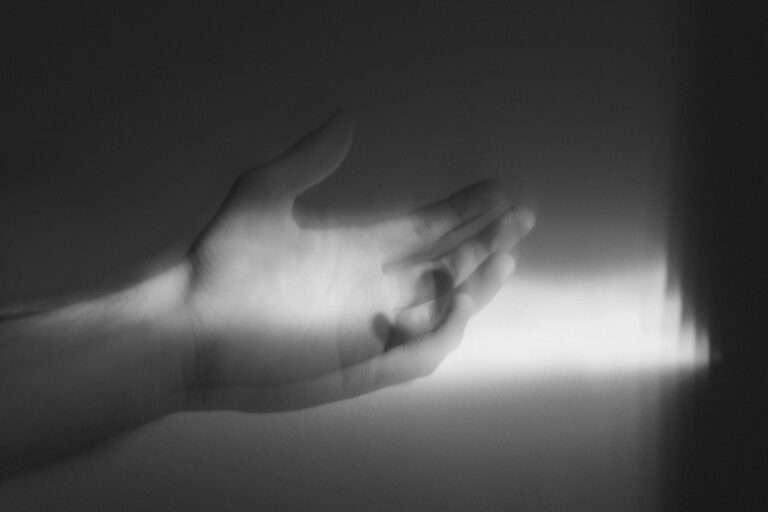Decoding the Mysteries of Abstract Art Symbolism

Abstract art is a form of artistic expression that does not attempt to represent an accurate depiction of visual reality. Instead, it focuses on the use of color, shape, line, and texture to convey emotions, ideas, and concepts. While some may find abstract art confusing or difficult to understand, it is important to recognize the significance of decoding the symbolism within these artworks. By understanding the symbolism in abstract art, viewers can gain a deeper appreciation for the artist’s intentions and the underlying messages being conveyed.
The Origins of Abstract Art and its Symbolic Language
Abstract art emerged in the early 20th century as a response to the traditional forms of representation in art. Artists such as Wassily Kandinsky and Piet Mondrian sought to break away from the constraints of realistic depiction and explore new ways of expressing themselves. They believed that art should be a reflection of the artist’s inner emotions and spiritual experiences.
The symbolic language used in abstract art allows artists to communicate complex ideas and emotions without relying on recognizable objects or figures. Instead, they use color, shape, line, and texture to create a visual language that can be interpreted by the viewer. This symbolic language allows for a more personal and subjective experience with the artwork, as each viewer may interpret the symbols differently based on their own experiences and perspectives.
Deciphering the Hidden Meanings of Color in Abstract Art
Color plays a crucial role in abstract art symbolism. Different colors can evoke different emotions and convey different meanings. For example, warm colors such as red, orange, and yellow are often associated with energy, passion, and warmth. Cool colors such as blue, green, and purple are often associated with calmness, tranquility, and introspection.
In abstract art, artists use color to create a certain mood or atmosphere within their artwork. They may use bold and vibrant colors to convey a sense of energy and excitement, or they may use muted and subtle colors to create a more serene and contemplative mood. By understanding the symbolism of color in abstract art, viewers can gain a deeper understanding of the emotions and ideas being expressed by the artist.
The Role of Shapes and Lines in Abstract Art Symbolism
Shapes and lines are also important elements in abstract art symbolism. Different shapes and lines can convey different meanings and evoke different emotions. For example, sharp and angular shapes may convey a sense of tension or aggression, while soft and flowing shapes may convey a sense of calmness or harmony.
Lines can also be used to create movement and direction within an artwork. Horizontal lines may suggest stability and tranquility, while vertical lines may suggest strength and power. Diagonal lines may suggest movement or tension, while curved lines may suggest grace or fluidity.
By understanding the symbolism of shapes and lines in abstract art, viewers can gain a deeper appreciation for the artist’s intentions and the underlying messages being conveyed.
The Significance of Texture and Composition in Abstract Art
Texture and composition are important aspects of abstract art symbolism. Texture refers to the physical quality of the artwork, such as roughness, smoothness, or thickness. Composition refers to the arrangement of elements within the artwork, such as the placement of shapes, lines, and colors.
Texture can add depth and dimension to an artwork, creating a tactile experience for the viewer. It can also convey a certain mood or atmosphere. For example, rough textures may suggest chaos or turmoil, while smooth textures may suggest calmness or serenity.
Composition is also important in abstract art symbolism. The arrangement of elements within the artwork can create a sense of balance or imbalance, harmony or discord. By understanding the symbolism of texture and composition in abstract art, viewers can gain a deeper understanding of the artist’s intentions and the underlying messages being conveyed.
The Use of Numbers and Patterns in Abstract Art Symbolism

Numbers and patterns are often used in abstract art symbolism to convey meaning and create visual interest. Numbers can represent specific concepts or ideas, such as unity, balance, or infinity. Patterns can create a sense of rhythm or repetition within the artwork, adding a visual element of harmony or order.
For example, the use of Fibonacci numbers and the Golden Ratio in abstract art can create a sense of balance and harmony. These mathematical principles are found in nature and are believed to create a sense of beauty and aesthetic pleasure.
By understanding the symbolism of numbers and patterns in abstract art, viewers can gain a deeper appreciation for the artist’s intentions and the underlying messages being conveyed.
Decoding the Symbolic Language of Abstract Art in Different Cultures
Abstract art symbolism can be interpreted differently in different cultures. While some symbols may have universal meanings, others may be specific to certain cultures or traditions. For example, the color red may symbolize luck and prosperity in Chinese culture, while it may symbolize danger or passion in Western culture.
Different cultures may also have different interpretations of shapes, lines, textures, and compositions. By studying the cultural context of abstract art, viewers can gain a deeper understanding of the artist’s intentions and the underlying messages being conveyed.
The Influence of Emotions and Psychology on Abstract Art Symbolism
Emotions and psychology play a significant role in abstract art symbolism. Artists often use abstract forms to express their inner emotions and psychological states. By using color, shape, line, texture, and composition, they can create visual representations of their thoughts, feelings, and experiences.
For example, an artist may use bold and vibrant colors to convey a sense of joy or excitement, or they may use dark and muted colors to convey a sense of sadness or melancholy. They may use sharp and angular shapes to convey a sense of tension or aggression, or they may use soft and flowing shapes to convey a sense of calmness or serenity.
By understanding the influence of emotions and psychology on abstract art symbolism, viewers can gain a deeper appreciation for the artist’s intentions and the underlying messages being conveyed.
The Evolution of Abstract Art Symbolism: From Modernism to Contemporary Art
Abstract art symbolism has evolved over time, reflecting the changing cultural, social, and artistic trends of each era. In the early 20th century, artists such as Wassily Kandinsky and Piet Mondrian sought to break away from traditional forms of representation and explore new ways of expressing themselves. They believed that art should be a reflection of the artist’s inner emotions and spiritual experiences.
In the mid-20th century, abstract expressionism emerged as a dominant movement in abstract art. Artists such as Jackson Pollock and Mark Rothko used bold and gestural brushstrokes to convey their emotions and psychological states. They believed that art should be a direct expression of the artist’s subconscious mind.
In contemporary art, abstract art symbolism continues to evolve and expand. Artists are exploring new materials, techniques, and concepts to create innovative and thought-provoking artworks. By studying the evolution of abstract art symbolism, viewers can gain a deeper understanding of the artistic trends and movements that have shaped the art world.
The Importance of Decoding Abstract Art Symbolism in Appreciating Art
In conclusion, decoding the symbolism in abstract art is crucial for appreciating and understanding these artworks on a deeper level. By understanding the significance of color, shape, line, texture, composition, numbers, patterns, cultural context, emotions, psychology, and the evolution of abstract art symbolism, viewers can gain a deeper appreciation for the artist’s intentions and the underlying messages being conveyed.
Abstract art allows for a more personal and subjective experience with the artwork, as each viewer may interpret the symbols differently based on their own experiences and perspectives. By engaging with abstract art in a thoughtful and open-minded way, viewers can develop a deeper connection with the artwork and gain a greater appreciation for the artist’s creative vision. So next time you encounter an abstract artwork, take the time to decode its symbolism and explore the hidden meanings within.
If you’re interested in exploring the symbolism behind abstract art, you might also find the article on the symbolism of the moon fascinating. The moon has long been a powerful symbol in various cultures, representing mystery, femininity, and the subconscious mind. To delve deeper into this topic, check out https://symbolismhub.com/what-does-the-moon-symbolize/. It’s a captivating read that will enhance your understanding of symbolic elements in art.
FAQs
What is abstract art?
Abstract art is a style of art that does not attempt to represent an accurate depiction of a visual reality. Instead, it focuses on the use of color, shape, and form to create a visual language that is open to interpretation.
What is the symbolism in abstract art?
The symbolism in abstract art is often open to interpretation. It can be used to represent emotions, ideas, or concepts that are not easily expressed through representational art. The use of color, shape, and form can be used to convey meaning and create a visual language that is unique to each viewer.
What are some famous examples of abstract art?
Some famous examples of abstract art include works by artists such as Wassily Kandinsky, Jackson Pollock, and Mark Rothko. These artists used color, shape, and form to create works that were open to interpretation and often conveyed deep emotional meaning.
What is the history of abstract art?
Abstract art has its roots in the early 20th century, with artists such as Wassily Kandinsky and Kazimir Malevich. These artists sought to break away from traditional representational art and create works that were more focused on the use of color, shape, and form. The movement gained popularity in the 1940s and 1950s with the rise of Abstract Expressionism.
What is the difference between abstract art and representational art?
The main difference between abstract art and representational art is that abstract art does not attempt to represent an accurate depiction of a visual reality. Instead, it focuses on the use of color, shape, and form to create a visual language that is open to interpretation. Representational art, on the other hand, seeks to accurately depict a visual reality through the use of recognizable objects and forms.





